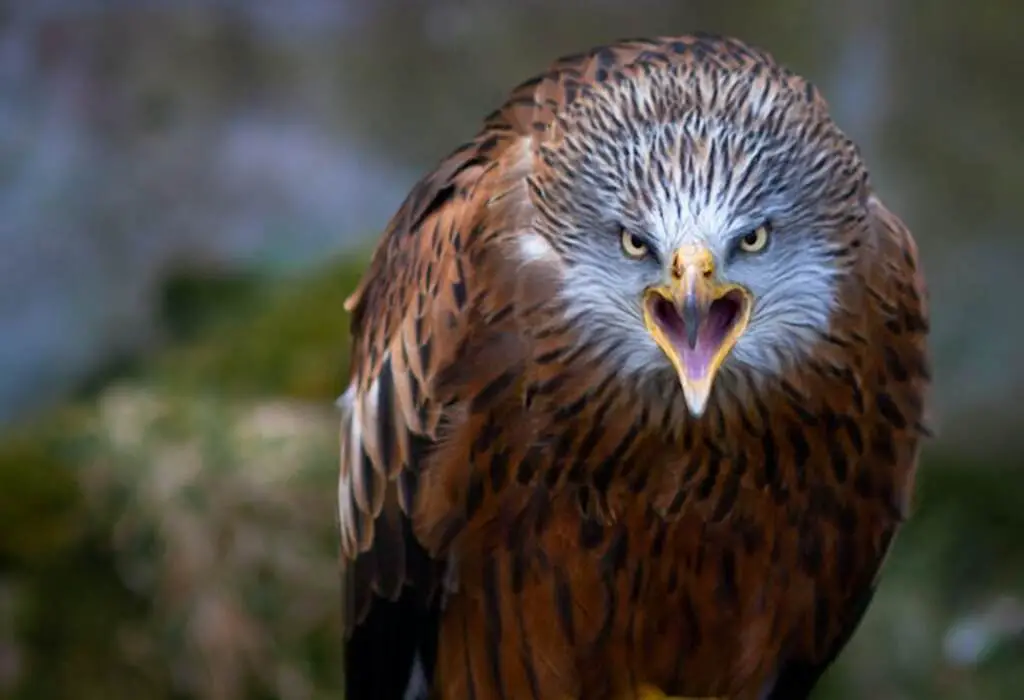“Why Do Birds Hiss?” It’s a question that has puzzled bird enthusiasts and perplexed feline adversaries for ages. Is it a secret language? A feathered warning sign? Or simply their sassy way of saying, “Back off, pal”?
In this article, we unravel the mystery of bird hissing, exploring the fascinating reasons behind this peculiar behavior.
Get ready to dive into the captivating world of avian sassiness and unlock the secrets of our feathery friends.
Table of Contents
- 1 The Mysterious Sound of the Avian World
- 2 Definition of Hissing in Birds
- 3 The Importance of Understanding Why Birds Hiss
- 4 Reasons why birds hiss
- 5 Types of bird species that commonly hiss
- 6 The Science Behind Bird Hissing
- 7 Conclusion
- 8 FAQs: Why Do Birds Hiss?
- 8.1 Why do birds hiss?
- 8.2 Do all birds hiss?
- 8.3 What triggers a bird to hiss?
- 8.4 Can pet birds hiss?
- 8.5 Is hissing the same as chirping?
- 8.6 Can birds hiss while flying?
- 8.7 How can I prevent a bird from hissing at me?
- 8.8 Can birds be trained not to hiss?
- 8.9 Are there non-aggressive reasons for a bird to hiss?
- 8.10 Should I be concerned if a bird hisses at me?
- 9 Author
The Mysterious Sound of the Avian World
Birds are considered some of the most fascinating creatures in nature, with their impressive ability to fly, sing and communicate with each other.
One intriguing behavior that birds exhibit is hissing. Hissing in birds is a unique sound that is produced by expelling air from their bodies.
While not all bird species hiss, those that do create an unforgettable, eerie sound that can be heard from far away. Understanding why birds hiss can help us better comprehend avian communication and behavior.
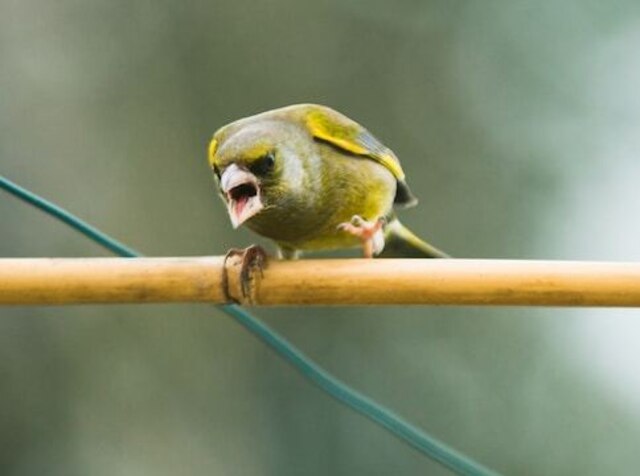
Definition of Hissing in Birds
Hissing in birds is a vocalization made by expelling air from the body to create a sharp, sibilant sound. This sound is created when air passes through narrow openings within the bird’s respiratory system, such as the trachea or syrinx.
The resulting noise can be compared to a snake’s hiss or a cat’s spitting sound. Birds use hissing as a means of communication and defense against predators or other birds.
It can also be used as an aggressive sign towards other individuals during territorial disputes.
The Importance of Understanding Why Birds Hiss
Studying avian behavior and vocalizations such as hissing can provide valuable insight into bird communication systems and social interactions.
By understanding why certain bird species make specific sounds, we may develop deeper appreciation for the complexity and beauty of natural systems.
Furthermore, learning about avian behavior can help us develop conservation strategies to protect endangered bird populations through understanding their behavioral patterns and needs.
By studying why birds hiss, we may also gain a greater appreciation for these fascinating creatures’ unique abilities to communicate using sounds different from those created by any other animal or human-made object.
Hissing In Birds: A Defensive Tactic Against Predators
One of the primary reasons birds hiss is to deter predators. Hissing can be an effective warning signal to potential predators that a bird is not to be trifled with.
Many bird species will use hissing as a defensive mechanism when they feel threatened.
The sound produced can be compared to the sound emitted by a snake, which can frighten away some predators that are wary of venomous snakes.
Examples of Birds That Hiss To Deter Predators
The common nightjar is one example of a bird that uses hissing as a defense mechanism. This nocturnal bird can be found on every continent except for Antarctica and produces a unique, distinctive hiss when it feels threatened or disturbed.
Another example is the Eurasian eagle-owl. This large species of owl frequently mimics the sounds made by snakes to scare off potential predators seeking eggs or young owlets.
How Hissing Can Be More Effective Than Other Defense Mechanisms
Hissing can also serve as an alternative defense mechanism over other behaviors such as flight, fighting, or camouflage.
One advantage of hissing is that it allows birds to create distance between themselves and predators without having to expend energy or risk injury in physical confrontation.
In addition, hissing may fool some predators into thinking they are dealing with something other than prey altogether and causing them to retreat.
Hissing As A Warning Signal To Other Birds In The Flock
Another reason birds might hiss is for communication between members of their flock. When one individual detects danger, they may produce a warning call in the form of a sharp hiss.
This signal alerts others around them to pay attention and take protective action if necessary.
This type of communication behavior has been observed in many different bird species such as robins, sparrows, and finches.
Hissing As A Sign of Aggression Towards Other Birds
Hissing can also serve as a sign of aggression towards other birds, especially during territorial disputes.
When two birds are competing for resources or territory, hissing may be used as a signal to indicate that one bird is not backing down.
This behavior has been observed in many different species of birds, such as swans, geese, and gulls.
Understanding the role that hissing plays in communication between birds can provide valuable insight into how they interact with each other and form social structures.
It also helps us appreciate the complexity and beauty of their vocalization systems.
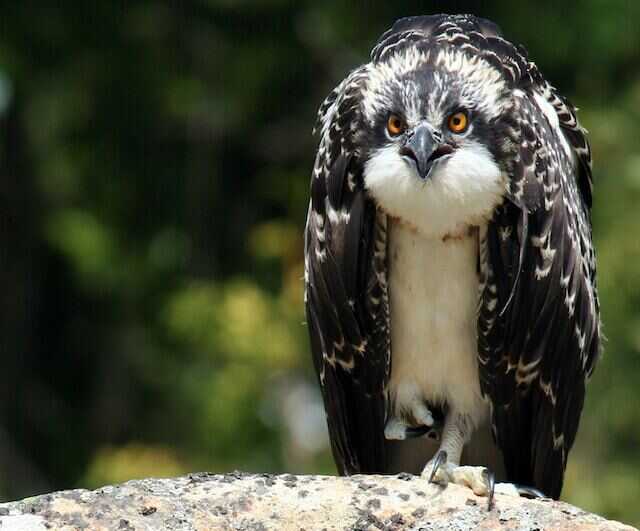
Reasons why birds hiss
Birds are fascinating creatures that employ a variety of behaviors to communicate and defend themselves.
Hissing is one such defense mechanism that some bird species use to protect themselves from predators or communicate with their flock.
Hissing is a sound produced by the birds’ beak, usually accompanied by an open beak and an extended neck. Let us explore the various reasons why birds hiss.
Defense mechanism against predators
Hissing can be an effective defense mechanism for birds against potential predators. Birds that hiss often do so to intimidate their attackers, making them think twice about attacking the bird.
For example, when threatened, some snake-eating birds like Secretary Birds will extend their neck and produce a loud hissing sound to deter snakes from attacking them.
Examples of birds that hiss to deter predators
Aside from secretarybirds, other bird species also use hissing as a defense mechanism against predators.
The Australian brush turkey (Alectura lathami) produces a low-frequency hissing sound when it feels threatened by potential attackers like dingoes or humans.
Similarly, the Indian peafowl (Pavo cristatus) produces a loud hissing sound when it perceives danger from large mammals or other predators.
How hissing can be more effective than other defense mechanisms
Hissing can be more effective than other forms of defense mechanisms for several reasons.
First, it provides an audible warning signal to both the predator and other nearby birds that danger is present in the area.
Second, it allows birds to appear larger and more threatening than they are physically by extending their necks and opening their beaks while making loud sounds.
Communication between birds
Aside from being used as a defense mechanism against predators, some bird species also use hissing as a form of communication between members of their flock.
In such cases, hissing is used as a warning signal to other birds in the group, alerting them to potential danger or threats.
For instance, when several bird species share the same food source, they may use hissing to communicate and warn each other when a larger or more dominant bird approaches.
Hissing as a sign of aggression towards other birds
Hissing can also be used by birds as a sign of aggression towards other birds. This display can be seen in many bird species that have territorial behaviors, such as geese or swans.
In these cases, hissing is used to establish dominance over another bird or group of birds that may be competing for the same resources or territory.
Hissing is an important defense mechanism and form of communication for various bird species.
From deterring predators to communicating with their flock and establishing dominance over others, hissing plays an essential role in their survival and behavior.
Understanding why do birds hiss can provide valuable insights into their ecology and behavior, while contributing significantly to conservation efforts for these fascinating creatures.
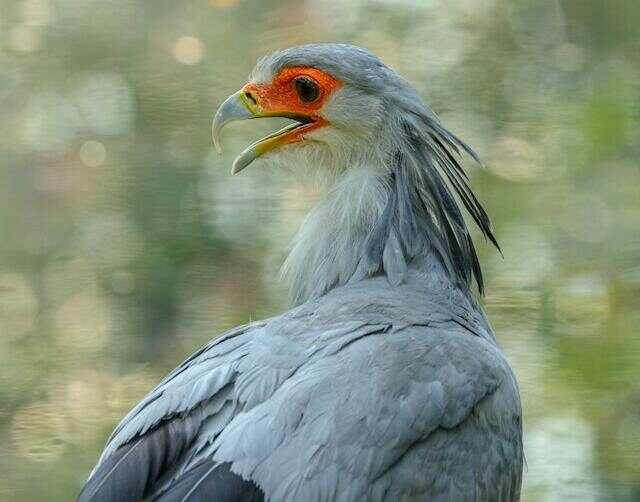
Types of bird species that commonly hiss
Birds have evolved many different types of vocalizations for various reasons. Hissing is one of the most distinctive sounds made by birds, and it is used by a variety of species for different purposes.
Some birds hiss as a warning, while others use it as a defense mechanism or to communicate with other members of their flock.
Snakes and raptors that mimic snake behavior
Some bird species have evolved to mimic the behavior and appearance of snakes in order to confuse predators.
Raptors like the Osprey, which are skilled hunters, often perch near water sources where they can swoop down and catch fish.
These predators often use hissing sounds to make their presence known to their prey, creating an environment of fear that makes it easier for them to catch their meal.
Examples of raptors and snakes that use this tactic
One example of a bird species that has evolved to mimic snake behavior is the Potoo, a nocturnal bird found in Central and South America.
The Potoo’s appearance looks much like a tree stump or branch when perched on trees, but when threatened the Potoo will open its bill very wide revealing bright white mouth lining while simultaneously producing an incredibly loud hiss which sounds just like escaping gas when one stomps on mud.
Another example is the Secretary Bird from Africa, which uses its specialized beak for hissing as well as stunning prey with powerful blows from its legs.
How this behavior can confuse predators
By mimicking snakes through hissing or physical appearance, some birds are able to deter potential predators who may not want to take on what appears to be venomous prey.
This creates confusion among predators, who might not know if they’re dealing with a harmless bird or dangerous snake.
The Osprey’s hissing sounds not only alert fish to the presence of danger, but also acts as a warning sign to other birds in the area, who can use this information to avoid the area and stay safe from danger.
Birds with specialized beaks for hissing
Some bird species have evolved specialized beaks that are uniquely suited for producing hissing sounds. These beaks might be longer and more slender than other bird species, or they may have unique structures that allow them to create specific types of noises.
Examples of bird species with specialized beaks
One example is the Yellow-billed Nunbird from Central America, which has a long and slender bill that is perfectly suited for producing hissing sounds.
Another example is the American White Pelican, which has a distinctive throat pouch that it uses to make loud, deep hissing sounds.
How these beaks help them produce unique sounds
Birds with specialized beaks are able to produce a wider range of vocalizations than other bird species, giving them an advantage when it comes to communication.
By making unique sounds, they can attract mates, warn off predators or communicate with members of their flock in ways that other birds cannot.
Overall, by understanding why birds hiss and the different types of bird behavior related to it, we are able to better appreciate these magnificent animals and their fascinating personalities.
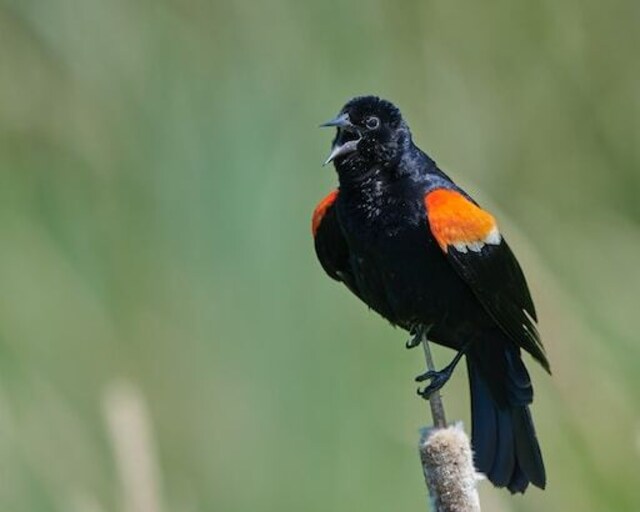
The Science Behind Bird Hissing
Anatomy and Physiology of Sound Production
Hissing is a form of sound production in birds, which involves the expulsion of air from the body to create a sound. The vocal apparatus in birds consists of the syrinx, which is located at the base of the trachea where it splits into two bronchi.
The syrinx contains muscles and membranes that vibrate to produce sounds. The ability to produce a wide range of sounds is due to the complex structure and physiology of the syrinx.
Different bird species have different configurations of muscles and membranes, allowing them to produce unique sounds. In some birds like parrots, not only do they have a syrinx but also an additional vocal organ called a larynx.
Expelling Air from the Body to Create Sound
Air is expelled from the lungs and directed through either or both bronchi into various resonating chambers in order to modify or amplify sound. The movement and interaction between these structures ultimately produce unique hissing sounds.
Birds can control their airflow by controlling their respiratory rate, volume, and pressure. They can also change their beak position or open/close airway valves to modulate sound production.
Role of Muscles, Vocal Cords, and Air Sacs
Muscles play an important role in sound production by controlling air pressure within different parts of the syrinx or changing its shape at will.
Vocal cords are present only in some birds, such as songbirds, but they use them differently than mammals do.
Birds use muscles around their syringeal membranes, instead pushing down on vocal folds with air pressure, like mammals do with larynxes.
Air sacs also play a critical role in creating sound by acting as resonating chambers for certain bird species during hissing.
They act like bellows, pumping air in and out of the respiratory system to create powerful and resonant vocalizations.
Sound Production as a Result of Mimicry
Some bird species like parrots have evolved the ability to mimic sounds they hear, including human speech.
This ability is not present in all birds, but when it is, it can lead to an impressive range of calls and songs that are unique to that particular species.
Mimicry is thought to be due to the presence of specialized brain circuits that enable birds to learn and produce sounds beyond their innate repertoire.
These circuits allow parrots to mimic human speech or other sounds they hear in their environment.
Conclusion: Understanding Sound Production in Birds
Understanding the science behind bird hissing involves exploring many complex anatomical and physiological features that are unique to avian species.
From air sacs acting as resonating chambers, to intricate muscle systems in the syrinx controlling pressure and airflow, there’s a lot more than meets the eye when it comes to bird vocalizations.
It’s through this understanding that we can better appreciate birds’ communication abilities and gain insight into behaviors such as reproductive success or predator avoidance.
By studying these mechanisms of sound production further, we can continue shedding light on some of nature’s most fascinating creatures.
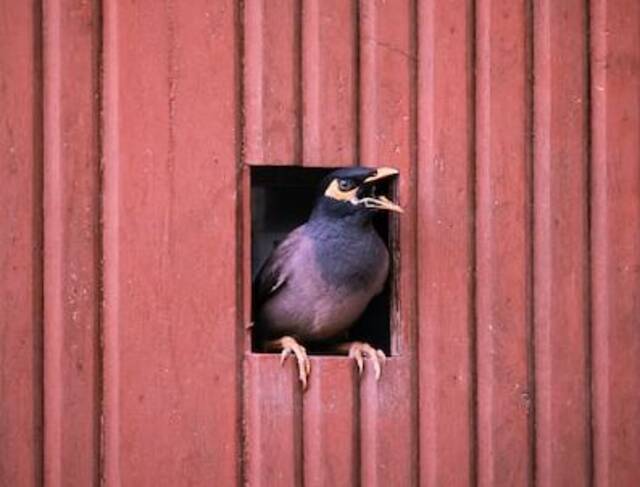
Conclusion
After examining the various reasons why birds hiss, it is clear that this behavior plays an essential role in their survival and communication.
Hissing can serve as a warning signal to predators, a means of communicating with other birds within the flock, or even a sign of aggression towards members of their own species.
While different bird species may use hissing for varying purposes, understanding this behavior can help us to better understand birds’ needs and motivations.
Moreover, studying bird behavior has significant implications for conservation efforts.
By identifying which species are more vulnerable to predation and how they defend themselves against their enemies, researchers can better design conservation programs that protect bird populations.
Additionally, by determining which birds use hissing as a defense mechanism or communication tool, we can pinpoint areas where human intervention may be necessary to reduce stressors such as habitat destruction or pollution.
Hissing is an important aspect of bird behavior that serves various functions for different bird species.
Understanding why birds hiss helps us to comprehend their complex social structures and communication patterns, while also contributing to conservation programs aimed at protecting vulnerable populations.
As we continue to study and appreciate the intricate world of birds’ vocalizations and behaviors, we will undoubtedly gain new insights into these fascinating creatures.

FAQs: Why Do Birds Hiss?
Why do birds hiss?
Birds hiss as a means of issuing a warning or displaying aggression. It is their method of conveying a serious message. Hissing serves various functions for birds, such as asserting dominance, defending their territory, and indicating their unease. This vocalization is often accompanied by defensive postures, alerting others to reconsider approaching too closely.
Do all birds hiss?
No, not all birds hiss. Hissing behavior is more commonly observed in birds of prey, such as hawks and owls, as well as some waterfowl like swans and geese. These birds use hissing as a part of their defensive repertoire, while other species may rely on different vocalizations or behaviors to communicate.
What triggers a bird to hiss?
Birds may hiss in response to perceived threats, such as the presence of predators, intruders in their territory, or when they feel cornered or scared. Hissing can also occur during territorial disputes or when birds are protecting their nests or offspring. It’s their way of warning potential adversaries to back off.
Can pet birds hiss?
Yes, pet birds can hiss too. Although domesticated birds may not face the same threats as their wild counterparts, they may exhibit hissing behavior if they feel threatened, stressed, or uncomfortable. It’s important for bird owners to understand their pets’ body language and provide a safe and secure environment to minimize stress-related hissing.
Is hissing the same as chirping?
No, hissing and chirping are distinct vocalizations with different meanings. While chirping is a common sound birds use for communication, hissing is more specific to warning or aggression. Chirping can express a variety of emotions, while hissing generally signifies a defensive or confrontational stance.
Can birds hiss while flying?
Birds typically don’t hiss while flying, as their focus is on maintaining flight and navigation. Hissing is more commonly observed when birds are on the ground or perched. However, some species, like geese, may produce hissing sounds during flight as a territorial warning to other birds encroaching on their airspace.
How can I prevent a bird from hissing at me?
Respect a bird’s personal space and avoid actions that may be perceived as threatening. Give them a wide berth and refrain from sudden movements or loud noises. Understanding their body language and respecting their boundaries will help minimize hissing encounters and promote a more harmonious coexistence.
Can birds be trained not to hiss?
Birds can be trained to modify their behaviors, including hissing, through positive reinforcement and patience. By providing a nurturing environment, socializing them properly, and using reward-based training techniques, you can help birds feel more secure and confident, reducing their inclination to hiss as a defensive response.
Are there non-aggressive reasons for a bird to hiss?
Yes, in some cases, birds may hiss due to stress, illness, or discomfort. It can be a sign that something is bothering them physically or psychologically. If you notice persistent hissing or any other abnormal behaviors, it’s advisable to consult a veterinarian to rule out any underlying health issues and provide appropriate care.
Should I be concerned if a bird hisses at me?
While hissing can be intimidating, it’s important to remember that birds generally hiss as a defensive measure, trying to establish boundaries or warn perceived threats. If you encounter a hissing bird, it’s best to give it space and avoid any actions that may escalate the situation. Respect their need for distance and allow them to feel safe.

